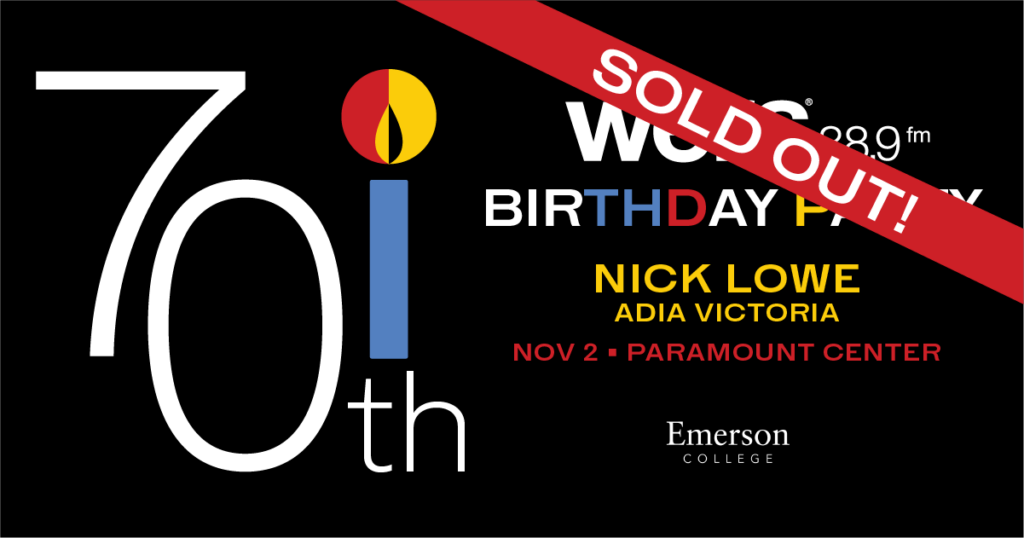
By Meghan Hockridge, Staff Writer
To celebrate Black Music Month, we are excited to be bringing back our Vault of Soul series by spotlighting a soul artist every Friday of June. Step inside the vault to discover the life and legacy of some of the world's greatest soul artists, both past and present. Continue reading to learn about Quincy Jones' groundbreaking career.
BIOGRAPHY
Quincy Jones has broken barriers and brought tremendous talent to every area of the music and entertainment industry he has worked in. Whether it be through recording, arranging, scoring, producing, or working in management or distribution, his impact is still felt today.
EARLY LIFE
Quincy Delight Jones Jr. was born in Chicago, Illinois in 1933 to Sarah Frances, a bank officer and apartment complex owner, and Quincy Delight Jones Sr., a semi-professional baseball player. Jones first got an introduction to music from his mom singing church songs around the house and his neighbor, a pianist. He picked up the trumpet while in elementary school in Chicago. Following a move to Bremerton, Washington, he began getting lessons from bandleader and record producer Robert Blackwell.
At 14 years old, he met a then-16-year-old Ray Charles. The two became close friends and musical collaborators, with a young Jones doing freelance arrangements for Charles as well as other musicians such as Count Basie and Duke Ellington.
Jones briefly studied at what is now known locally as Berklee College of Music. An invitation to play trumpet on tour with Lionel Hampton's band prompted him to step away from Berklee and ultimately helped his professional career take off.
SOLO CAREER
Jones released his first solo album in 1956, titled This Is How I Feel About Jazz. Soon after, he moved to Paris and became the Music Director of Barclay Discs. In 1958, Eddie Barclay Et Son Grand Orchestre and Quincy Jones released Et Voila! Over the next few years, he formed a band with eighteen other musicians called The Jones Boys. The band toured all over North America and Europe until disbanding due to financial troubles.
What happened with The Jones Boys inspired Jones to get involved with the business side of music. He earned a position as musical director for Mercury Records New York division and in only a few years, worked his way to Vice President. He set precedent as the first African American to hold an executive position at a major American record label.
In 1959, Jones released the solo record The Birth of a Band with Mercury records. And in 1962, he released Big Band Bossa Nova which was a major success. The record includes one of his most successful songs "Soul Bossanova." Throughout the '60s, Jones worked on arranging songs for many popular artists including Frank Sinatra, Peggy Lee, and Ella Fitzgerald.
Around this time, Jones also began focusing more on film scoring. However, he didn't stop releasing solo music. From 1970 until today, he has released over 20 new solo albums, such as You've Got It Bad Girl (1973), and The Dude (1981), among other major music endeavors.
FILM SCORING AND PRODUCING CAREER
Quincy Jones first got into film scoring with the 1964 movie The Pawnbroker. Following the success of that movie, he moved to Los Angeles and began working on the score for The Slender Thread (1965). He went on to score many major films such as In The Heat Of The Night (1967), In Cold Blood (1967), and The Color Purple (1985).
His talent didn't go unrecognized. In 1968, Jones and Bob Russell became the first African Americans nominated for an Academy Award for Best Original Song for "The Eyes of Love," featured in the film Banning. That same year, he earned a nomination for Best Original Score for In Cold Blood, and three years later was the musical director and conductor of the Academy Awards.
In 1978, Jones began scoring the film The Wiz starring Diana Ross and Michael Jackson, thus beginning a long collaborative relationship with Jackson. Jones went on to produce Michael Jackson's Off The Wall (1979), Thriller (1982), and Bad (1987). Thriller is still to this day the best-selling album of all time.
He was also a producer of the television sitcom The Fresh Prince of Bel-Air. The show aired its first episode in 1990, running six seasons and introducing rapper Will Smith to the world of acting.
AWARDS WON
- Honorary Doctorate of Music (Berklee College of Music, 1983)
- Golden Plate Award of the American Academy of Achievement (presented by Awards Council member Ray Charles, 1984)
- Grammy Legend Award (1992)
- 28 additional varied Grammy Wins - Jones has won more Grammys than any other producers
- A Record 80 Career Grammy Nominations - Jones holds a tie with Jay Z for the most nods
- Humanitarian Award (BET Awards, 2008)
- National Medal of Arts from President Barack Obama (2011)
- Honorary doctorate (Royal Academy of Music, 2015)
- Ahmet Ertegun Award (Rock and Roll Hall of Fame, 2013)
- Inducted into the Black Music & Entertainment Walk of Fame as a "foundational inductee" (2021)
SPOTLIGHT TRACKS
"SOUL BOSSA NOVA" (1962)
Off Jones' 1962 album Big Band Bossa Nova, "Soul Bossa Nova" remains one of Quincy Jones' most played original songs. Its use of the cruíca and other Bossa Nova-esque instrumentation gives it its original color. Roland Kirk is the flute soloist in this track, giving the song its addictive hook. A testimony to the song's addictive quality is how often it's appeared in media over time. It was first used in the movie The Pawnbroker, scored by Jones himself. "Soul Bossa Nova" was also the theme in a long-running Canadian game show called Definition. Its use on this show inspired Canadian hip hop group Dream Warriors to sample it as well as Mike Myers for his movie Austin Powers: International Man of Mystery. Jones claims he arranged the piece in only 20 minutes.
"BILLIE JEAN" (1982)
Of Michael Jackson's album Thriller, "Billie Jean" is one of the most successful songs produced by Quincy Jones. Opening with an infectious bassline and synths, the song is immediately recognizable. In the pre-chorus, you can hear some faint horns in the background, no doubt Jones' decision. We hear those horns come back in the last chorus, mixing with Jackson's voice, the guitar, and the repetitive bassline. All these sounds swirl around to make one of the most famous pop songs of all time.
"WE ARE THE WORLD" (1985)
Following the famine affecting Ethiopia in 1983, Quincy Jones decided to help put together the "We Are The World" performance. This performance was a charity event bolstered by its star-studded lineup. While the song is credited to a group called U.S.A. For Africa, some of the artists involved were Michael Jackson, Diana Ross, Dionne Warwick, Paul Simon, and Bob Dylan, just to name a few. It became one of the fastest-selling pop singles in history and went quadruple platinum. This song is also just one example of many acts of social activism that Jones' participates in.
You can revisit past Vault of Soul articles here, featuring artists such as Mavis Staples, James Brown, Aretha Franklin, Marvin Gaye, and more.
Interested in exploring the Soul genre beyond the vault? Be sure to tune into 88.9 every night between 10 pm and 2 am for The Secret Spot. Let host D Danubian wind you up and simmer you down with a blend of R&B, Soul, and Slow Jams.
Also, be sure to check out ERS+, our new HD radio experience. Take a deep dive into R&B and Hip Hop with the legendary voices of Soul alongside new and pioneering MCs. Find ERS+: Boston's Black Experience online at WERSPlus.Org


